new posts in all blogs
Viewing: Blog Posts Tagged with: Farms, Most Recent at Top [Help]
Results 1 - 25 of 32
How to use this Page
You are viewing the most recent posts tagged with the words: Farms in the JacketFlap blog reader. What is a tag? Think of a tag as a keyword or category label. Tags can both help you find posts on JacketFlap.com as well as provide an easy way for you to "remember" and classify posts for later recall. Try adding a tag yourself by clicking "Add a tag" below a post's header. Scroll down through the list of Recent Posts in the left column and click on a post title that sounds interesting. You can view all posts from a specific blog by clicking the Blog name in the right column, or you can click a 'More Posts from this Blog' link in any individual post.

By: Shelf-employed,
on 3/16/2015
Blog:
Shelf-employed
(
Login to Add to MyJacketFlap)
JacketFlap tags:
birds,
vampires,
dogs,
favorites,
funny,
toddlers,
kindness,
rabbits,
hamsters,
farms,
E,
space travel,
Advance Reader Copy,
Add a tag
This edition of the Picture Book Roundup features "jampires" (!), two Stanleys (one dog, one hamster), and a new Kadir Nelson book for which I can't find enough superlatives. Enjoy!
If you can't see the slideshow, I've included my reviews below.
If You Plant a Seed is a brilliantly written and exquisitely illustrated book about kindness. Sparse but meaningful text, combined with joyfully detailed illustrations of plants, birds, and animals. I love it!
- MacIntyre, Sarah and David O'Connell. 2015. Jampires. New York: David Fickling (Scholastic)
Who could be sucking all the jamminess out of the doughnuts? Jampires! Will Sam find jam? Will the Jampires find their nest? If you like funny, this is the best!
- Bee, William. 2015. Stanley the Farmer. New York: Peachtree.
Stanley is a hardworking hamster. Illustrations and text are bright and simple, making Stanley a perfect choice for very young listeners. Along the lines of Maisy, but with a crisper, cleaner interface. Nice size, sturdy construction.
The Wimbledons can't sleep. What IS all that noise? It's only Stanley, the dog. He's howling at the moon, fixing the oil tank, making catfish stew, ...? Hey, something's fishy here! Classic Jon Agee - droll humor at its best.
Review copies of
Jampires,
Stanley the Farmer, and
It's Only Stanley were provided by the publisher.

.jpeg?picon=3306)
By: Zoe,
on 5/11/2014
Blog:
Playing by the book
(
Login to Add to MyJacketFlap)
JacketFlap tags:
Humour,
Seasons,
Cats,
Chickens,
Pigs,
Cows,
Gardening,
Vegetables,
Books in translation,
Farms,
Sven Nordqvist,
Add a tag
Have you and your kids ever attempted to grow your own vegetables and failed miserably? Maybe the weather’s contrived against you? Or the slugs have slithered wild and destroyed your crops?
 If so, perhaps Findus Plants Meatballs by Sven Nordqvist will put a wry smile on your face.
If so, perhaps Findus Plants Meatballs by Sven Nordqvist will put a wry smile on your face.
Pettson, a crochety but ultimately kind and charming old man lives on a small homestead in the countryside, with a mischievous cat, Findus, as his only real family. Spring has arrived and it’s time to plant their vegetable patch.
But try as they might, the odds are not in their favour. First the chickens dig up the newly planted seeds. Then a neighbour’s pig escapes and runs riot. Should Findus and Pettson just give up on vegetables altogether? (Many a child reader/listener might well cheer at this point!)
Slapstick humour abounds in this seasonal tale full of optimism and utter chaos. It’s is also great for starting discussions about where food comes from (tying in with the primary school ‘field-to-fork’ topic rather nicely).
Fans already familiar with Pettson and Findus (this is the seventh Findus and Pettson book now translated into English and published by Hawthorne Press) will delight in familiar tropes; the threat of the fox, the problematic fellow farmer Gustavsson, the crazy DIY projects and the mysterious mini magical folk. If you’re new to this utterly delightful Swedish import the ramshackle illustrations teeming with life and laughter will quickly win you over.




You’ll be infinitely richly rewarded for spending time pouring of the illustrations; even in choosing just a few cameos to share with you today, we’ve discovered many more visual jokes, even though this must be the 20th time we’ve read the book.
Charismatic characters, high jinks, and heart-warming friendship combined with witty, surprising and satisfying illustrations all add up to another winner from Sven Nordqvist.
We’ve been reading this funny book down on our allotment in between planting our vegetables and flowers for this year.


And just like Findus, the girls said they wanted to see what would happen if they planted meatballs. So I called their bluff, and said that of course they could plant meatballs (along with carrots, onions and beans)…

And thus a new family dinner was created! A field of mashed potato made the most fertile ground for planting sauted onions, carrots, steamed beans, and – of course – some extra special meatballs.


Whilst planting our meatballs we listened to:
On top of spaghetti (all covered in cheese, I lost my poor meatball when somebody sneezed), here sung by Tom Glazer
One Meatball by Fred Mollin (from the film Ratatouille) – here’s an older version (lovely, but not quite a jazzy as the Disney version):
My Favorite Meatball by Danna Banana (Meatballs the world over unite!)
Other great activities to go along with reading Findus Plants Meatballs include:
Exploring the garden activities over on NurtureStore. Cathy produces handy month by month guides to getting planting, playing and harvesting with your family.
Making some bird houses to put up in your garden. Pettson and Findus’s world is full of little cottages up in the trees and you might find inspiration to add one or two to your outdoor space on this Pinterest board.
Creating your own flock of chickens out of old plastic pots. Pettson’s chicks are white, but I do think these from hellokids.com have the right sort of attitude and funkiness to be friends (?!) with Pettson and Findus.
Reading How to Grow a Dinosaur by Caryl Hart, illustrated by Ed Eaves. After all, if you can plant meatballs, why not dinosaurs?
Have you any vegetable planting horror stories you can share with me? Or enormously successful tales of child-friendly seed sowing?
Disclaimer: I was sent a free review copy of this book by the publisher.
By:
Sue Morris,
on 5/7/2014
Blog:
Kid Lit Reviews
(
Login to Add to MyJacketFlap)
JacketFlap tags:
festivals,
farms,
slapstick,
5stars,
Denys Cazet,
Library Donated Books,
Creston Books,
light-hearted fare,
weasels coyotes and hyenas,
Children's Books,
Middle Grade,
humor,
Favorites,
Series,
cows,
children's book reviews,
Add a tag
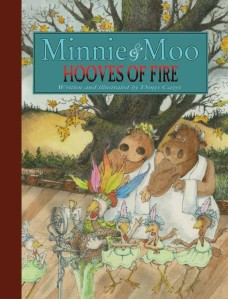 .
.
Minnie and Moo: Hooves of Fire
by Denys Cazet
Creston Books 2014
978-1-939547-08-8
Age 8 to 12 206 pages
.
“It’s a perfect day for the First Annual Hoot, Holler, and Moo Talent Festival. The sun is shining in a warm autumn sky and the stage is set. Mr. and Mrs. Farmer are away on vacation, Minnie and Moo are dressed in their togas, Elvis has his bagpipe, the hyenas their jokes, the fox his magic tricks, the sheep a protest poem, and the cash box is stuffed with money from ticket sales. A perfect day. Wait a minute . . . Where is the cash box? Why are those coyotes on motorcycles? And who pushed those port-a-potties down the hill?”
Opening
“It was Indian summer on the farm. The air smelled of damp leaves and fallen apples.”
The Story
Minnie and Moo are on the stage looking over their First Annual Hoot, Holler, and Moo Talent Festival when Minnie begins worrying. Whenever Minnie thinks, she worries. First up on the stage are Zeke and Zack, formerly conjoined turkeys, to sing a turkey poem in two-part harmony. Wait, who is that with the greasy, slicked back hair pushing the turkeys off stage. It’s Elvis the rooster, with an ego bigger than the farm. He will steal the show all day long and when kicked off, again, he will go reluctantly with two words, “Geeze Louize.”
Meanwhile the coyotes are starting trouble, the weasels are conniving, and both want the cash box that is supposed to buy the farmer a new tractor. Throughout the day little catastrophes will occur. Moo will take it all in stride sure things will work out. Minnie worries. She wants to call off the festival. Now the hyenas have joined the coyotes and the weasels and that means just more trouble for Minnie to worry about . . . but then the cash box does go missing. It’s those hyenas, or those coyotes, or those weasels, or maybe all three. Minnie and Moo must get the money back, clean up the festival grounds, and get back to their animal homes before Mr. and Mrs. Farmer return home, just hours from now. Will they make it, or will all the hard work be for naught and Minnie right, they should have canceled the festival?
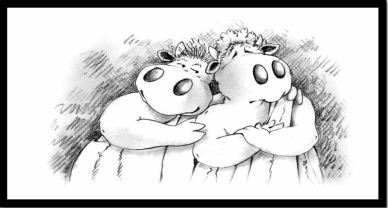
Review
Minnie and Moo are quite a pair. They complement each other. One is of the mind that everything will work out fine, the other worries about everything. They are also two of the funniest cows in togas middle grade readers will ever meet. The cast of characters are right out of a slapstick movie. Most are the good guys, but then there are the bad guys who only want the moneybox. Then there is Elvis, a rooster performer that tries to steal and keep the stage as long as possible. Jokes are plenty, slapstick flies all over the stage, and sarcasm will have kids rolling on the floor. The animals have their eccentricities, all played for laughs.
The writing is very good. The author uses lots of dialogue, which speeds up the story. Minnie & Moo: Hooves of Fire is a fast, enjoyable read, with loads of black and white illustrations to help the reader visualize the story. It was never difficult to see in my mind’s eye what was happening, but the illustrations are a nice break from the fast-paced story.

This is the newest of several Minnie and Moo stories, including Minnie & Moo and the Seven Wonders of the World. This is not a series in the traditional sense. Book 1 does not lead to book 2 into book 3 . . ., instead each are separate stories that stand on their own. The one advantage to reading the first book is knowing the characters, and there are a lot of them, prior to starting Hooves of Fire. Marketed as a middle grade book, Minnie & Moo: Hooves of Fire could easily have been an early reader. The vocabulary is not difficult, nor is the plot hard to follow. Reluctant readers might even find Minnie and Moo an agreeable read.
I fell in love with these two adorable cows who only want to help their farmer get a needed tractor. The weasels are wonderful as villains with trickery, smart-aleck remarks, and a talent for smooth talking Moo into complacency—until Minnie begins to think and worry. Kids will find Minnie & Moo: Hooves of Fire fun, funny, and frivolous in a good way. This is the kind of story a teacher could read aloud, one chapter at a time, with students eager for the next chapter. If these two moos are not the stars of a third book, I will miss them.
MINNIE & MOO: HOOVES OF FIRE. Text and illustrations copyright © 2014 by Denys Cazet. Reproduced by permission of the publisher, Creston Books, Berkeley, CA.
.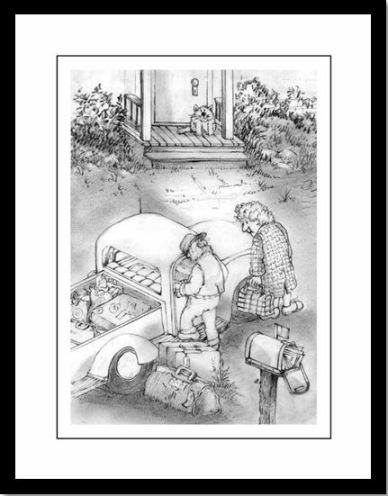
Learn more about Minnie & Moo: Hooves of Fire HERE.
Buy your copy of Minnie & Moo: Hooves of Fire at Amazon —B&N—Book Depository—Creston Books—your local bookstore.
—B&N—Book Depository—Creston Books—your local bookstore.
.
Meet the author / illustrator, Denys Cazet, at his blog: http://www.dailypretzel.com/
Find ore books at publisher Creston Books’ website: http://www.crestonbooks.co/
.
Also by Denys Cazet

Elvis the Rooster Almost Goes to Heaven
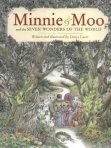
Minnie & Moo and the Seven Wonders of the World
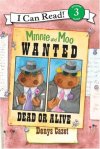
Minnie and Moo: Wanted Dead or Alive
.
.

Filed under:
5stars,
Children's Books,
Favorites,
Library Donated Books,
Middle Grade,
Series Tagged:
children's book reviews,
cows,
Creston Books,
Denys Cazet,
farms,
festivals,
humor,
light-hearted fare,
slapstick,
weasels coyotes and hyenas 







By:
KidLitReviews,
on 12/20/2012
Blog:
Kid Lit Reviews
(
Login to Add to MyJacketFlap)
JacketFlap tags:
3stars,
Library Donated Books,
carnival barkers,
carnival game,
John Arnold,
not chickens,
prize ducks,
waddles,
reviews,
book review,
cats,
carnivals,
circus,
autobiography,
ducklings,
children's book,
self published,
Debut Author,
bluebirds,
ducks,
childrens book review,
farms,
Createspace,
Add a tag
3 Stars Autobiography of a Duck John Arnold 36 Pages Ages: 7 and up …………. Autobiography of a Duck is just that, the life of one Pekin Duck, not a chick, as told by the duck. Duck hatched and then lived with his siblings and his mother on a farm. Then one day, some humans [...]
By: Stacy Dillon,
on 8/9/2012
Blog:
Welcome to my Tweendom
(
Login to Add to MyJacketFlap)
JacketFlap tags:
family,
Friendship,
quilting,
chickens,
farming,
grandparents,
abuse,
school life,
farms,
arc from ALA12,
8/12,
Nancy Paulsen Books,
Add a tag
Prairie is unhappy when her grandmother up and announces that it's time she moves home. After all, Grammy is much more than simply a grandmother to Prairie; she is her friend and her teacher as well. Especially since they moved up to New Paltz, NY from North Carolina.
Prairie's family inherited the farm from her mama's side of the family. New Paltz is where she grew up, and now the Evers family are trying to make a go of life by living off this small portion of land. Folks in town seem to have lots to say about this whole situation.
When Prairie and her mama are in town to pick up Prairie's new chicks, her mama leaves her in the malt shop while she runs some errands. While Prairie is sitting at the counter top, she overhears some women mention her mama's name. The women go on to talk all kinds of foolishness about her family-- how Prairie probably can't even read and isn't in school -- how her family probably doesn't have two pennies to rub together -- and it is everything Prairie can do to sit put and not give those women a piece of her mind.
One of those insults, however, is soon unfounded. Prairie's folks tell her that she has to enroll in school. Grammy has always taught Prairie before. They were explorers, learning about things that are interesting. How can she ever go to a school where she is trapped inside all day? How can she ever learn to raise her hand when she has something to say? Or not to blurt out an answer?
School is only made bearable by the one friend that Prairie sets on making. Her name is Ivy Blake. She's clearly a loner and a pretty quiet one at that, but Prairie seeks her out and soon they are spending lots of time together, and Prairie actually starts to feel happy. But as she slowly peels back the layers of Ivy's existence, Prairie realizes that things are not always as they seem.
Ellen Airgood has written a story of family, friendship and loss that while sad in measure is buoyed by an overarching feeling of hope. Even though Prairie and Ivy are misfits on their own, together they are strong and they even each other out. Ivy's family story is an intense one and is buffered by the Evers' family's cohesiveness. There is a Southern feeling to this story despite the setting, and while the idea of the importance of making family is loud and clear, the story never gets eclipsed by it. Prairie is a strong protagonist and readers are likely to admire her even as they cringe at her adjustments to school life.
Charlie the Ranch Dog. Ree Drummond. Illustrated by Diane Degroat. 2011. HarperCollins. 40 pages.
Oh, hello. My name is Charlie. I live in the country. I'm a ranch dog. This is Suzie. She's my best friend. We sure don't look much alike, do we? Suzie, unfortunately, doesn't have the paws I have. Or the droopy eyes. Or the floppy skin. Or...the big dangly ears. Suzie's ears don't dangle. Never have. Never will. I try not to hold that against her.I really liked this one! I thought it was a very cute dog story. Charlie may talk the talk, but does he really do as much work around the ranch as he claims?! One of the things I liked best about this one was Charlie's voice. It just felt right to me! I especially loved this scene:
The first thing we do every day is get out of bed early. Too early. Dark early. I'd better go wake up Suzie. She's never been much of a morning dog.
And then there is this little gem:
After breakfast, I usually go help Mama in her vegetable garden. Mama loves her garden. I don't really understand all the fuss. I'd prefer a bacon garden myself. But I go ahead and lend a hand anyway.
Of course, half the fun is spotting the differences between the text and the illustrations!
I really, really enjoyed both the text and the illustrations. You might
enjoy reading the back story of this picture book.
Text: 4 out of 5
Illustrations: 5 out of 5
Total: 9 out of 10
© 2011 Becky Laney of
Young Readers

By: Lauren,
on 7/8/2011
Blog:
OUPblog
(
Login to Add to MyJacketFlap)
JacketFlap tags:
Literature,
writing,
Blogs,
Media,
ebooks,
spam,
prose,
farms,
Thought Leaders,
Dennis Baron,
A Better Pencil,
*Featured,
content farms,
Add a tag
By Dennis Baron
There’s a new online threat to writing. Critics of the web like to blame email, texts, and chat for killing prose. Even blogs—present company included—don’t escape their wrath. But in fact the opposite is true: thanks to computers, writing is thriving. More people are writing more than ever, and this new wave of everyone’s-an-author bodes well for the future of writing, even if not all that makes its way online is interesting or high in quality.
But two new digital developments, ebook spam and content farms, now threaten the survival of writing as we know it.
According to the Guardian, growing numbers of “authors” are churning out meaningless ebooks by harvesting sections of text from the web, licensing it for a small fee from online rights aggregators, or copying it for free from an open source like Project Gutenberg. These authors—we could call them text engineers—contribute nothing to the writing process beyond selecting passages to copy and stringing them together, or if that seems too much like work, just cutting out the original author’s name and pasting in their own. The spam ebooks that result are composed entirely of prose designed, not to convey information or send a message, but to churn profits.
The other new source of empty text is content farms, internet sweatshops where part-timers generate prose whose sole purpose is to use keywords that attract the attention of search engines. The goal of content farms is not to get relevant text in front of you, but to get you to view the paid advertising in which the otherwise meaningless words are nested.
Ebook spam and content farms may sound like the antitheses of traditional writing, in that they don’t inform, stimulate thought, or comment on the human condition. They’re certainly not the kind of repurposed writing that Wired Magazine’s Kevin Kelly foresaw back in 2006 when he wrote that we’d soon be doing with online prose what we were already doing with music: sampling, copying, remixing, and mashing up other people’s words to create our own personal textual playlists.
Kelly, who was paid for his essay, also predicted that in the brave new world of digital text the value we once assigned to words would shift to links, tags, and annotations, and that authors, no longer be paid for producing content, would once again become amateurs motivated by the burning need to share, as they now do with such abandon on Facebook and Twitter.
But if we mash up Kelly’s futuristic vision with the harsh reality that strings of keywords may bring in more dollars than connected prose, then it’s possible that tomorrow’s writers won’t be bloggers, Tweeters, or even taggers, they’ll be scrapbookers, motivated by the burning need to cut and paste. The web may be making authors of us all, but the growing number of content-free links threatens to put writing as we know it out of business.
A cynic might argue that far too many writers have already mastered the art of saying absolutely nothing, so we shouldn’t be surprised if our feverish quest to capitalize on the internet, combined with the vast expansion of the author pool that the net makes possible, have created the monster of contentless prose. We get the writing we deserve.
Plus, things online having the attraction that they do, instead of damning these new genres, soon we may be teaching students how to master them. After all, no writing course is considered complete without a unit on how to write effective email. So it won’t be long before some start-up offers a course in text-mashing instaprose. Or an
Chicken, Chicken, Duck! Nadia Krilanovich. 2011. Random House. 32 pages.
Chicken ChickenDuckGoat SheepLlamamaa maabaa baasnufflecluckQuack!Chicken, Chicken, Duck! is one of those picture books that is very simple. In just a few words--in just a few pages--Nadia Krilanovich tells a simple story with a humorous twist. (Will every reader find it funny? Well, I can't answer that for you. Picture books are incredibly subjective.) If you have a little one in your life that loves everything farm-related, farm-animal related, if you have a little one that loves animal sounds, then this new book may be for you.
This one didn't wow me. I thought it cute enough that it was worth reviewing. And I do plan on sharing it as a read aloud. But. It's not one I see--at this moment--making my best list. Still not every book has to be THE BEST BOOK EVER.
© 2011 Becky Laney of
Young Readers

By: shelf-employed,
on 4/6/2011
Blog:
Shelf-employed
(
Login to Add to MyJacketFlap)
JacketFlap tags:
rhyming,
book review,
funny,
storytime,
wordless,
immigrants,
farms,
metafiction,
E,
Add a tag
It's been a while since I've done a picture book roundup and they've been piling up on my desk. Here are a few new favorites:
Mayer, Mercer. 2011. Octopus Soup. Tarrytown, NY: Marshall Cavendish.
Wordless and wonderful! Find out how Octopus escapes the chef's pot! Too funny!
(Look inside) Yaccarino, Dan. 2011. All the Way to America: the Story of a Big Italian Family and a Little Shovel. New York: Knopf.
Yaccarino, Dan. 2011. All the Way to America: the Story of a Big Italian Family and a Little Shovel. New York: Knopf.When Dan grew up, he married Helen. These are my grandparents. Together Dan and Helen opened a market. They sold all sorts of wonderful Italian food. Now the little shovel belonged to Dan, and he used it to measure out beans, macaroni, and olives.
Dan Yaccarino's personal tale of immigration and tradition. A perfect introduction to genealogy, and a great choice for this summer's reading theme of One World, Many Stories.
Watt, Melanie. 2011. You're Finally Here! New York: Hyperion.This hilarious book has been waiting for you, and it's about time you showed up!
Pfister, Marcus. 2011. Questions, Questions. New York: NorthSouth.Simple, thoughtful and artistic. Guaranteed to elicit questions.
How do birds learn how to sing? What brings summer after spring? What turns leaves from green to brown and sends them floating gently down?
Beaumont, Karen. 2011. No Sleep for the Sheep! Ill. by Jackie Urbanovic. New York: Harcourt.Get ready for a long night -
In the big red barn on the farm, on the farm, in the big red
 Earlier this week I brought you a classic Swedish illustrator and a book originally published over 100 years ago. As a foil to that, today I bring you a modern, prize winning Swedish author – Sven Nordqvist.
Earlier this week I brought you a classic Swedish illustrator and a book originally published over 100 years ago. As a foil to that, today I bring you a modern, prize winning Swedish author – Sven Nordqvist.
Born in 1946 Nordqvist originally trained as an architect before returning to his childhood dream of illustration with the publication of his first book, an alphabet book, in 1982. Three years later he published his first book in what has come to be an extremely popular series about a slightly eccentric farmer, Pettson, and his cat, Findus.
Winner of several prizes, including the Elsa Beskow Plaque (1989), The August Prize (2007) and the German Youth Literature Prize (1992), Nordqvist has seen his books published into many different languages from Hindi to Hungarian. Indeed, his Pettson and Findus books have been translated into English multiple times – originally as Festus and Mercury, and later retaining the original Swedish names Pettson and Findus.
And so it is to Pettson and Findus I turn now, with reviews of two books, Pancakes for Findus (one of the 1001 Children’s Books You Must Read Before You Grow Up) and When Findus was Little and Disappeared.
Pancakes for Findus takes place on Findus’ birthday.
Findus had three birthdays a year, because it was more fun that way. And every birthday, Pettson made him a pile of pancakes.
First he went to the hen house to collect a basket of eggs. Then he sat on the bench outside the kitchen and polished them. Pettson was a tidy man and he wanted them all clean and shiny.
So begins a hilarious story about Pettson, his chaotic life, and the lengths he’ll go to to ensure his beloved cat Findus can celebrate his birthday in style. One thing leads to another and before long baking the birthday pancakes has involved climbing over the shed roof, playing music to a bull, tying a curtain to Findus’ tail and adding that secret ingredient known as trousers to the pancake batter. Sound crazy? Well it certainly is, but it makes for a perfect recipe – both for a story and for pancakes.
2 Comments on An Eccentric Farmer and his Loveable Cat, last added: 1/27/2011
Peedie. Olivier Dunrea. 2004/2008. Houghton Mifflin Harcourt. 16 pages.
This is Peedie.Peedie is a gosling.A small, yellow gosling who sometimes forgets things.Peedie may forget plenty of things--to eat all his food, to take a nap, to come in out of the rain. But he NEVER forgets to wear his lucky red baseball cap. Or almost never. Readers learn what happens when Peedie puts his special hat in a secret place. (I think secret places are like safe places. And you probably know how tricky those can be!) Can Peedie remember his secret place? Or is his lucky red cap gone for good?
I liked this one! I think this series is very fun, very playful.
© 2011 Becky Laney of
Young Readers
Ollie. Olivier Dunrea. 2003/2007. Houghton Mifflin Harcourt. 16 pages.
This is Ollie.Ollie is waiting.He won't come out.Gossie and Gertie have been waiting for weeks for Ollie to come out.Gossie and Gertie are impatient. They are tired of waiting for Ollie to hatch out of his shell. Ollie keeps protesting that he won't come out, he won't come out, he won't come out. And these two friends keep pleading with Ollie again and again. Will this egg ever hatch? He may when he's ready--in his own time. Perhaps after the two tell him NOT to come out!
While Ollie isn't my favorite board book by Olivier Dunrea, it is still a fun read! There are other Ollie adventures, I believe, that I haven't had the opportunity to read: Ollie the Stomper, Ollie's Halloween, Merry Christmas, Ollie, Ollie's Easter Eggs, etc.
© 2011 Becky Laney of
Young Readers
Gossie and Gertie. Olivier Dunrea. 2002/2007. Houghton Mifflin Harcourt. 16 pages.
This is Gossie.This is Gertie. Gossie wears bright red boots.Gertie wears bright blue boots.They are friends. Best friends.I enjoyed Gossie & Gertie even more than Gossie. In this adventure, the goslings friendship is explored and defined. Readers may notice--or at least adult readers will notice--just how bossy Gossie is! How spirited. But Gertie is not one that is easily led. No, sometimes Gertie likes to have a say! And that's okay with Gossie. Especially if where he is leading her is to dinner!
The text is very fun, very playful. Proof that simple can be a very good thing! And the illustrations match that spirit well.
© 2011 Becky Laney of
Young Readers
Gossie. Olivier Dunrea. 2002/2007. Houghton Mifflin Harcourt. 16 pages.
This is Gossie, Gossie is a gosling.A small, yellow gosling who likes to wear bright red boots.Every day.I enjoyed this board book very much! I found the text to be playful and fun. I liked the repetition and predictability. I liked the character of Gossie very much. I liked her personality. In just a few words, I got a clear sense of what this gosling was
all about! I could tell that she was a character, if you know what I mean! Of course, the artwork has something to do with that too!
© 2011 Becky Laney of
Young Readers

So Mikey Cunningham of The Hours fame was judging the NPR 3-Minute Fiction contest a couple months back. The rules were simple. Start a story with the line, “Some people swore that the house was haunted,” and end it with the line, “Nothing was ever the same again after that.” Don’t exceed 600 words and if you win, your entry will be read aloud the FM radio! Like Little Orphan Annie!
I entered a subtle little tale of teenage machismo and abandoned farmhouses. And guess what? Mikey didn’t like it. I lost. Actually, I’ll give myself some credit. I’m pretty sure I just missed the cut of the top 25 runners-up. That fact isn’t exactly confirmed by Carl Kasell, but I’m going to operate under the notion. And if 27th is good enough for the Maldives, then it’s good enough for me.
I thought of tucking the story away in a drawer and pulling it out on rainy Sundays to provide myself with a good windowsill weep, because what else am I gonna do, send it to the Paris Review? Postage to France is expensive! Then I remembered I have a blog and so I might as well share it in the style that is popular with the youth of today. That is, blogically (check Urban Dictionary for me, cause that’s gotta be something the kids say). So here you go. A very short story.
Oh yeah, and after reading it, read this real life tale that was uncovered a few weeks after my fictional one hit the bottom of Ira Glass’s trash can. Disturbing and creepy to say the least.
Covington
Some people swore that the house was haunted. Mark thought haunted wouldn’t fly. Poltergeists were subtle, and the time for subtle had passed. We needed raving. Bleeding. A sweaty lunatic with a painty maul.
Kelly had a girl’s name, but he insisted that back when men were men, they were called Kelly. Lesley. Marion.
“Sue?” asked Mark.
“Sure. Song about it, isn’t there?”
I drove. Always. Hand on the tuner. In search of night music. Not dark exactly, but something that stalked.
“This works,” Mark said.
“Whatever.” Kelly rolled down the window and I could smell the stuff they sprayed to kill mosquitoes. It was a summer of puddles, the summer that was supposed to matter.
We pulled up, noticed that Byron’s place had nylon siding and a sofa on the porch.
“Making crystal in the bathtub, I bet.”
I shook my head, but Mark probably wasn’t far off. I poked the horn, just enough to announce our presence.
Byron was out immediately, screen door snapping behind him. Kelly ducked down to hide his face and I motioned to the back seat.
We’d gone about half a mile when Byron acknowledged it was Kelly sitting shotgun. “Not hittin’ that party, are we?”
“Bingo.” Mark was e
My official swap partner for Perfect Picture Books by Post was Beth and her homeschooling family in New Hampshire. They chose to send us a Caldecott medal winning picture book set in their home state, Ox-cart Man by Donald Hall, illustrated by Barbara Cooney.

Photo: VinothChandar
Beth couldn’t have known that right here, right now this is the perfect picture book for us – I’m currently reading M Little House on the Prairie, and as soon as we’d finished reading Ox-cart Man she immediately made a connection between the two. Somehow seeing the life she’s listening to shown in another book really thrilled her and ever since it has been inspiring hours and hours of role play.
Ox-cart Man depicts the rhythm of a year in the life of a New England farmer and his family in the early to mid 1800s. Opening with the farmer packing up his ox-cart with goods he and his family have grown, made and prepared throughout the preceding 12 months, we follow his journey through russet and gold autumnal countryside to Portsmouth Market, where he sells his wares, right down to his ox and cart. Using his earnings to buy a few store goods for his family he returns home to start preparing for the following year’s market, with his first task being to build a new yoke and cart.

Photo: sskennel
The tale is told in a sparse and unadorned manner (for example, barely any adjectives are used), mirroring the family life being depicted. But in the eyes of a 21st century girl it is a tale full of wonder. I think M found it both slightly baffling and rather thrilling to see how much the family makes and grows for itself (even though we make and grow quite a lot ourselves, at least by urban, British standards). Baffling because of the simple lack of “stuff” and the value placed on nowadays seemingly almost valueless items like a single needle, and thrilling because it appeals to every young child’s sense of independence and belief that they can do everything themselves.
Barbara Cooney’s illustrations match the simplicity of the text. They are unfussy, yet full of historical detail and

What the Ladybug Heard by Julia Donaldson, illustrated by Lydia Monks
All of the animals on the farm make their own type of noise, except for the little ladybug. She never says anything at all. That is until she hears two robbers planning how to steal the farm’s prize cow. They know just where each animal on the farm sits and what noises they make so that they can find their way in the dark without alerting the farmer. So the ladybug heads to the farm, tells the animals about the robbers, and comes up with a cunning plan to foil them. Told in a wonderful romping rhyme and rhythm, this book has immediate appeal.
Donaldson has a great ear for rhythm and rhyme, never pushing it too far to become annoying. She weaves in humor effortlessly. The premise for the book is very clever, mixing animal noises with a barnyard mystery and a silent witness. Monks’ illustrations are done in mixed media which makes them visually interesting. The painted sheep has a wooly coat that is a photograph of wool. The bushes around the farm are either photographs of leaves or fabric. There is just enough of the mixed media to still have a very cohesive feel.
Get this into your farm storytime and also for any insect unit or story time. It is a winner of a read, just be prepared for plenty of animal noises and ask the audience to help! Appropriate for ages 2-4.
Reviewed from copy received from Henry Holt.
Also reviewed by Pied Piper Picks.

Mary’s Penny by Tanya Landman, illustrated by Richard Holland
A feminist retelling of a classic folk tale, this book combines a stylish modern feel with the classic feel and tone of a folk tale. A farmer needs to decide which of his children he will leave his farm to. Will it be the brawny Franz or the beefy Hans? He doesn’t even consider his daughter Mary because she is a girl, though Mary does have something her brothers lack: brains. The farmer gives each of his sons a single penny. Their challenge is to purchase something with their one penny that will fill the entire house. Franz heads to the market and purchases lots and lots of straw, but he cannot manage to fill the entire house. Hans heads to the market and purchases lots and lots of feathers. Though he fills the house further than his brother, he too fails. Now the farmer is in despair until Mary asks to try. And you will just have to read the book to find out how Mary spends her penny and fills the entire house.
Landman’s text here sets just the right tone. She plays with the repetition and rhythm of the traditional folk tale, yet injects a modern sensibility about the role of women in society. Thanks to the traditional features of the book, it is a pleasure to read aloud. Holland too plays with the traditional and modern. In his case, he uses sleek modern lines and modern illustration techniques yet still manages to have something vintage in them. The illustrations have lots of white space and textures and patterns that make them very interesting and unique. They also have a flatness that hearkens back to traditional folk art.
A skillful combining of the traditional and the modern, this book should not languish on your folk tale shelves. Get it into the hands of parents and teachers. It would also make a great choice when librarians visit elementary classrooms, because its modern edge will draw slightly older children into the story. Appropriate for ages 4-8.
Reviewed from library copy.
Some new books about gardens and growing things.
 My Friends the Flowers
My Friends the Flowers 
by William Lach, illustrated by Doug Kennedy. Abrams, 2010.
This splendid picture book channels
Ub Iwerks and
Max Fleischer while imparting real facts and information about roses, hollyhocks, snapdragons, morning glories and more.
Lach's writing bounces with rhyme and highlights a quality of each featured bloom.
Marigold SCARES all the bugs
He likes to make them run.
Sunflower's big happy face basks in the morning sun.
Doug Kennedy must have draw some inspiration from Disney's
Silly Symphonies. His flowers preen and smile. Bugs add comedy to the scenes. The book ends with a glossary of featured flowers, complete with photographs, facts and the scientific names. Directions for growing a bug scaring garden (marigolds,) a sun loving garden (sunflowers,) and a fast growing garden (morning glories) are also included.
 A Garden of Opposites
A Garden of Opposites 
by Nancy Davis. Schwartz & Wade, 2009
Books that introduce the concept of "opposites" are a tradition in the picture book landscape for very young children.
Nancy Davis offers familiar images from the world of gardening translated into bright colors and simple, mostly symmetrical shapes.
Worms, spades, garden shears, bugs and butterflies are used to present opposite concepts like, inside and outside (the inside of an apple and the outside,) open and closed (an

Up We Grow! A Year in the Life of a Small, Local Farm by Deborah Hodge, photographs by Brian Harris
This book shows the beauty and work of running a small farm. The book moves from season to season, highlighting the work being done at that time. In spring, seeds are sown, plants are transplanted, compost is spread. In summer the animals and plants are growing bigger. The flowers are blooming, bees are buzzing, crops are being harvested, and they have a farm celebration. In fall, it’s harvest time for crops and for honey. The farmers markets are active and the farmers are saving seeds to use next year. In winter, it is slower. The farmers repair their equipment, feed their animals, and grow plants in the greenhouse. This book offers lots of information in friendly green boxes that specifically talk about sustainable practices. It is a gentle way to introduce organic farming to young readers.
Hodge’s text is refreshingly light in tone, often asking readers to talk about their own experiences. Her use of text in boxes for the more dense, factual portions works very well, making the book flexible for different ages and audiences. Harris’ photographs really capture the fresh air and sunshine of a farm. From friendly animals to deep rich soil, his photos are interesting and vibrant.
A book that will have everyone wanting to munch some farm-fresh veggies and visit a friendly goat or two, it is a warm invitation to investigate small farms in your area or at least spend some time at a farmer’s market this fall. Appropriate for ages 4-6.
Reviewed from copy received from Kids Can Press.

By: Becky,
on 7/27/2010
Blog:
Young Readers
(
Login to Add to MyJacketFlap)
JacketFlap tags:
alphabet,
animals,
humor,
concept books,
Simon and Schuster,
board books,
2005,
farms,
2010,
review copy,
Add a tag

Click, Clack, ABC. Doreen Cronin. Illustrated by Betsy Lewin. 2005/2010. Simon & Schuster. 24 pages.
Animals awake
Beneath blue blankets.
Clickety-clack!
Duck dashing,
Eggs emptying,
Flippity-flip!
Goats grooming,
Hens helping,
Inchworms inching.
The animals are getting ready for another adventure. An alphabetical adventure. What does the day hold in store for our clever farm animals?
Are you a fan of Doreen Cronin? Do you have a favorite character? A favorite book? From
this series. I'd have to say the original, Click, Clack, Moo: Cows that Type and Dooby, Dooby Moo are my favorites! I love the typing cows! And I really love the duck! There's just something so fun, so playful, so silly about these books!
© Becky Laney of
Young Readers

By: Becky,
on 7/27/2010
Blog:
Young Readers
(
Login to Add to MyJacketFlap)
JacketFlap tags:
2006,
animals,
humor,
counting,
concept books,
Simon and Schuster,
board books,
farms,
2010,
review copy,
Add a tag
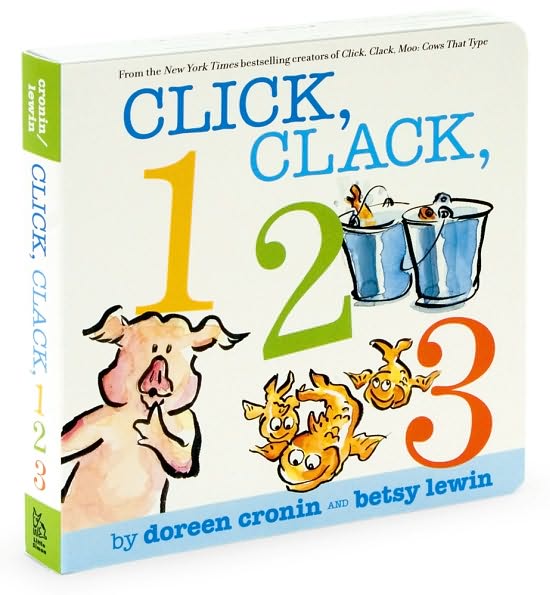
Click, Clack, 123. Doreen Cronin. Illustrated by Betsy Lewin. 2006/2010. Little Simon. 22 pages.
1 farmer sleeping.
2 feet creeping.
3 buckets piled high.
4 chickens standing by.
5 cows type a note.
I don't know about you, but I just LOVE, LOVE, LOVE these spirited books by Doreen Cronin. Have you read
Click, Clack, Moo: Cows that Type? How about
Giggle, Giggle, Quack or
Thump, Quack, Moo? Then there is
Dooby Dooby Moo and
Duck for President!
Like the previous books in the series, this one offers a few surprises!
© Becky Laney of
Young Readers

The Cow Loves Cookies by Karma Wilson, illustrated by Marcellus Hall
Told in a jaunty rhyme, this book shows life on a farm through a funny, quirky lens. Farmer feeds each animal every day. The horse eats hay. The chickens eat chicken feed. The geese eat corn. The pig eats slop. The dog loves doggie treats. As each animal is introduced along with the food it eats, the chorus chimes in with “the cow loves cookies.” Then with each new animal, the previous ones are added to the rhyme, forming a fun, cumulative tale. In the end, the reader will be pleased to find out exactly how the cow got a taste for cookies.
This book is made to read aloud with its great rhymes that never grow stale and the wonderful rhythm that is built into them. Even better, there is that chorus line that children will love to help repeat. Hall’s illustrations echo the light-hearted tone of the text with their free flowing style and friendliness. They are also large enough to work well with a group of children.
Add this one to your storytime reads for barnyard books. Perhaps even concluding the stories with some cookies, you know that the children love cookies! Appropriate for ages 3-6.
Reviewed from copy received from McElderry Books.
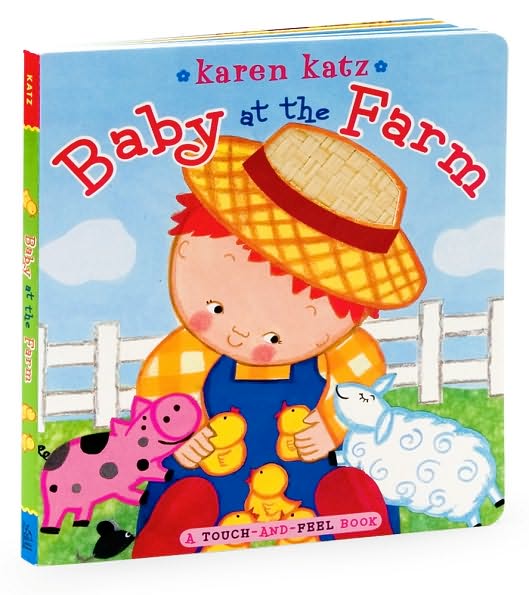
Baby at the Farm. Karen Katz. 2010. Simon & Schuster. 10 pages.
Baby is visiting the farm today.
Look! It's a big cow.
Moo! Moo!
Baby feeds the tiny pigs...
Oink! Oink!
And the soft little lamb.
Baa! Baa!
I love Karen Katz. I do. She's one of my favorite authors. I loved her
Baby at the Farm. It was cute, simple, and sweet. There are plenty of touch-and-feel elements to the book. I love the horse's mane, for example.
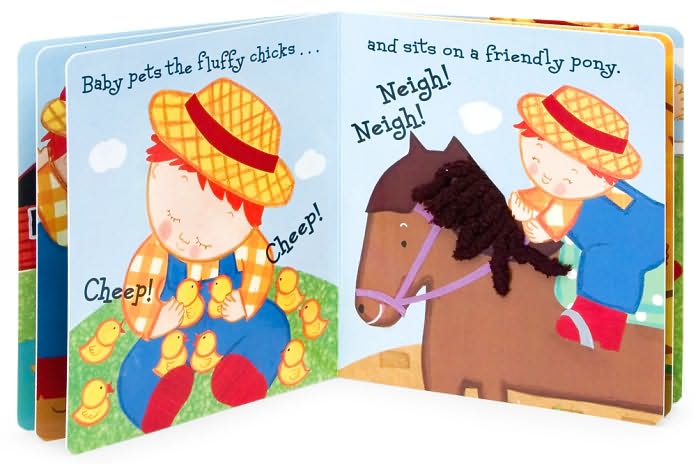
I would definitely recommend this one along with other Katz titles. Like
What Does Baby Say? A Lift the Flap Book,
Where is Baby's Beachball, and
Shake It Up, Baby.
© Becky Laney of
Young Readers

Country Road ABC: An Illustrated Journey Through America's Farmland. Arthur Geisert. 2010. May 2010. 64 pages.
I liked this one. It's not an alphabet book for the Chicka Chicka Boom Boom crowd. But I think it would pair very well with Farm by Elisha Cooper a title I reviewed just last month. This isn't your typical cute-picture-book-set-on-a-farm type of book (like Click, Clack, Moo Cows That Type or Farmer Duck). Readers know that from the start...
A is for Ammonia Fertilizer
B is for Barn Cats
C is for Coffee and Candy
D is for Disking
E is for Erosion
A glossary at the back provides readers with more information about each word. For example, "disking is a method of turning over soil in preparation for the planting of oats, corn, and soybeans."
What I loved most about this one are the illustrations.
© Becky Laney of Young Readers
View Next 6 Posts




 If so, perhaps
If so, perhaps 








 .
.













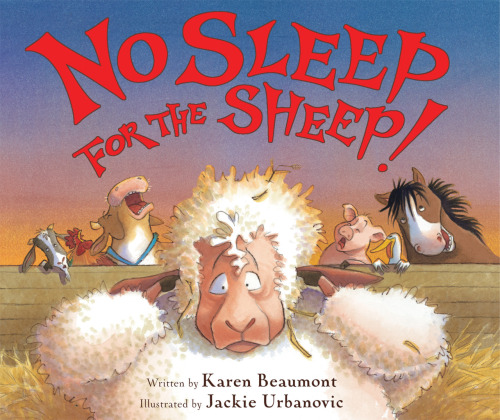



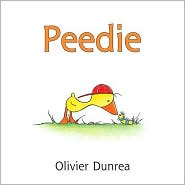

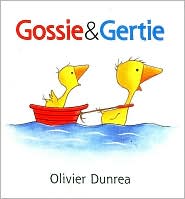
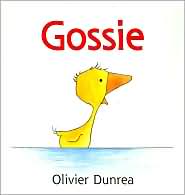















We are big Findus and Pettson fans! Even have a computer game that must be 15+ yrs old!
Oh! A computer game? Wow. I know there’s lots of tie ins available in Sweden – I’ve always rather fancied a Pettson and Findus calendar.
We love Pettson and Findus, a lot of the stories have also been translated into German, they’re so full of humour.
We have kebab sticks dotted around the garden to show where my daughter planted apple pips in February (no sign of anything growing yet though!). A day after we planted them she decided she should make a sign saying apples for sale. Luckily she doesn’t sen too disappointed by the lack of progress but that’s part of learning about gardening